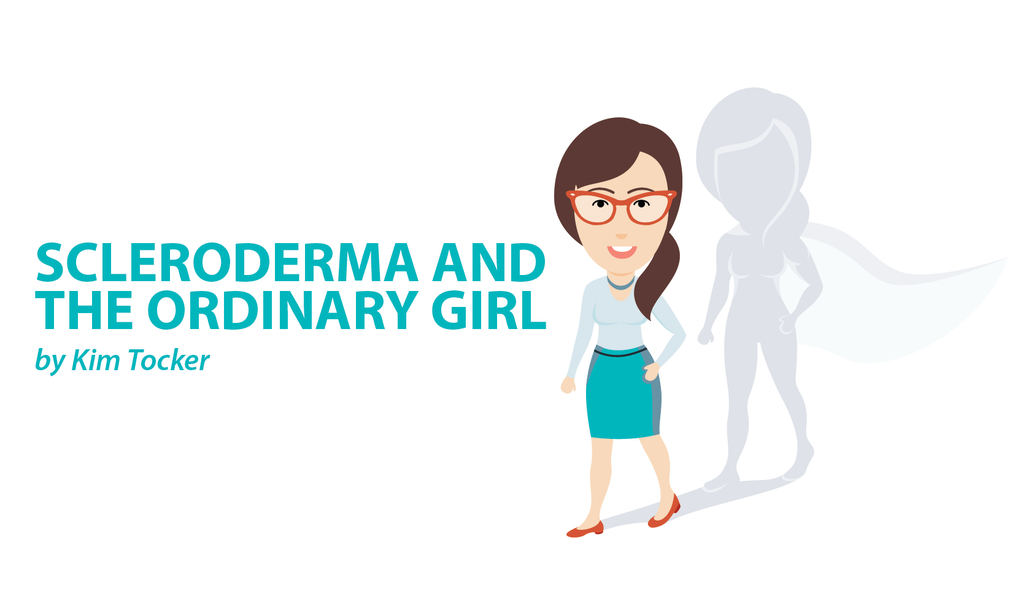What Do Christmas Tree Lights and Scleroderma Have in Common?
Written by |

As Christmas approaches, I always become rather nostalgic. It marks the end of another year, and despite trying not to, I tend to look back to the same time last year and note how my health has further declined thanks to scleroderma. This process always begins when we put up the Christmas tree, which starts with sorting through the decorations and untangling the lights.
So … What do Christmas lights and scleroderma have in common? Very likely, nothing at all for most people. But for me, there is a connection, both figuratively and literally.
When we were youngsters, my dad always got out the lights and carefully laid them on the floor. We kids were very excited to put the tree up, and I recall my mum trying to keep us under control, warning us not to step on the lights while dad got them ready. Then the painstaking process began.
You see, they would never work the first time, because in those days, if one of the bulbs in the string of lights had become loose or was faulty, then none of the others would work at all. Dad always had to go along each and every light to check the bulbs. Sometimes they needed replacing, and sometimes they simply needed tightening as they had become loose. It was a slow and methodical process, but we all knew that until dad had completed the task, the lights simply weren’t going to go.
As I stood looking at the decorations a few days ago in preparation for trimming our beautiful tree, the usual melancholic thinking about my disease progression began. Following is a small sampler of my thoughts:
“My hands are definitely worse this year, much less flexible and stiffer.”
“It’ll be more painful to decorate the tree with the increase in my joint inflammation, and it’ll take at least two or three days to get it done this year as I’m so much more fatigued now.”
“I doubt whether I’ll enjoy Christmas dinner as my swallowing has become worse. I’ll probably have to puree the Christmas pudding.”
“Now that the secondary Sjögren’s has kicked in, talking to everyone on Christmas day will be so hard with my dry mouth.”
These thoughts are about the seemingly small issues that scleroderma brings. They are not concerns about my failing heart or compromised lungs. They don’t relate to prognosis, longevity, or how many more Christmases I may have to go. Strangely enough, I don’t really consider those things in my annual Christmas self-assessment. It’s always about how the small aspects of the disease progression impact my life as a whole.
Just like the Christmas lights dad used to struggle with every year, when one small thing goes wrong — no matter how tiny it seems (and those bulbs were pretty minuscule) — it has the power to affect everything else on a much larger scale.
Painful joints and hands that don’t work properly not only mean that I am limited in terms of helping with the rituals that go with the season — decorating the tree, helping prepare the food, and wrapping the gifts — it also makes me grumpy and unpleasant to be around, which in turn really affects my self-esteem. Communicating with my loved ones is huge for me, and not being able to speak nearly as much means increased feelings of isolation. Sharing food together at Christmas time cultivates a feeling of community and togetherness, but not so much when I cannot really enjoy the food or am preoccupied with not choking at the Christmas table.
I wish I could simply replace the small parts that are going wrong, or just reconnect the processes in my body that don’t work properly any longer. But scleroderma, unlike dad’s Christmas tree lights, doesn’t work that way.
So, my wish this year as I watch my family hang the bubbles and wrap the tree in tinsel, is that a cure for scleroderma comes in 2018.
In the meantime, please enjoy this picture of our cat Willow enjoying our Christmas tree lights, and I’ll crank up my magic bullet and look forward to a berry smoothie for Christmas lunch.
***
Note: Scleroderma News is strictly a news and information website about the disease. It does not provide medical advice, diagnosis, or treatment. This content is not intended to be a substitute for professional medical advice, diagnosis, or treatment. Always seek the advice of your physician or other qualified health provider with any questions you may have regarding a medical condition. Never disregard professional medical advice or delay in seeking it because of something you have read on this website. The opinions expressed in this column are not those of Scleroderma News or its parent company, Bionews Services, and are intended to spark discussion about issues pertaining to scleroderma.








Leave a comment
Fill in the required fields to post. Your email address will not be published.